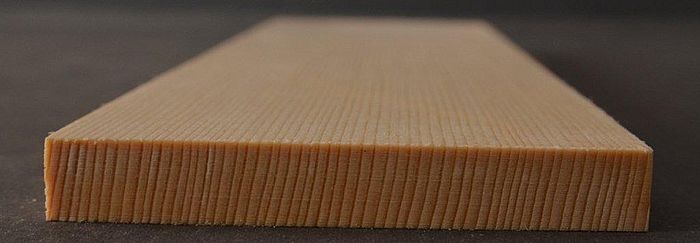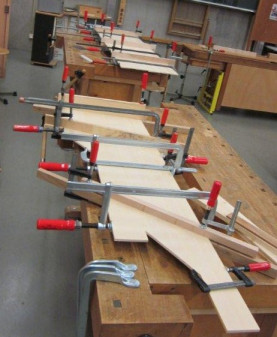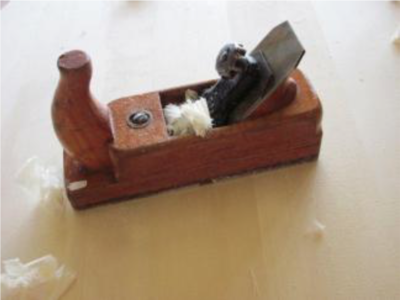4. The coarse cut
The shape of the soundboard can now be cut out with an addition. Attention: The grain of the wood is not parallel to the cabinet wall in the bass, but diagonal, like the strings. This prevents the soundboard from splitting off from the cabinet wall in the bass.
5. Planing out
The prerequisite is a very good planer, a clean plane sole, a super-sharp blade, optimum settings and a stable and flat surface on which the soundboard lies during Planung. The upper side is the first to be smoothed and thus finished, because it can no longer be machined after the underside has been thinned out. The underside is thinned out exactly according to the plan to the edges. The strongest area is in the middle - with my instrument it is 4 mm. The soundboard was thinned out to 2.3 mm at the edge of the treble.
Tip: Since large quantities of wood have to be removed, the chip is strongly adjusted. There is a risk of deep tearing. To prevent this, the so-called "dwarf" planes at right angles to the wood grain and initially accepts a rough surface. For fine planing, the grain is used again.
Tip: With a handful of compressed chips, the wood can be polished up. By heating the resin of the spruce is distributed on the soundboard. This results in an elegant surface and also protects against dor
In this condition the soundboard is very elastic and sensitive. Before it is further processed, it should rest for as long as possible. For this reason I have put this complex topic at the beginning of all work.
Tip: When the soundboard is placed in the sun, the almost white spruce wood naturally darkens and gets a golden colour. In a later contribution, the soundboard will then be further processed. Do you have any questions? I look forward to exchanges and suggestions.
The next blog post will be about veneering - and that's not possible...
read on




